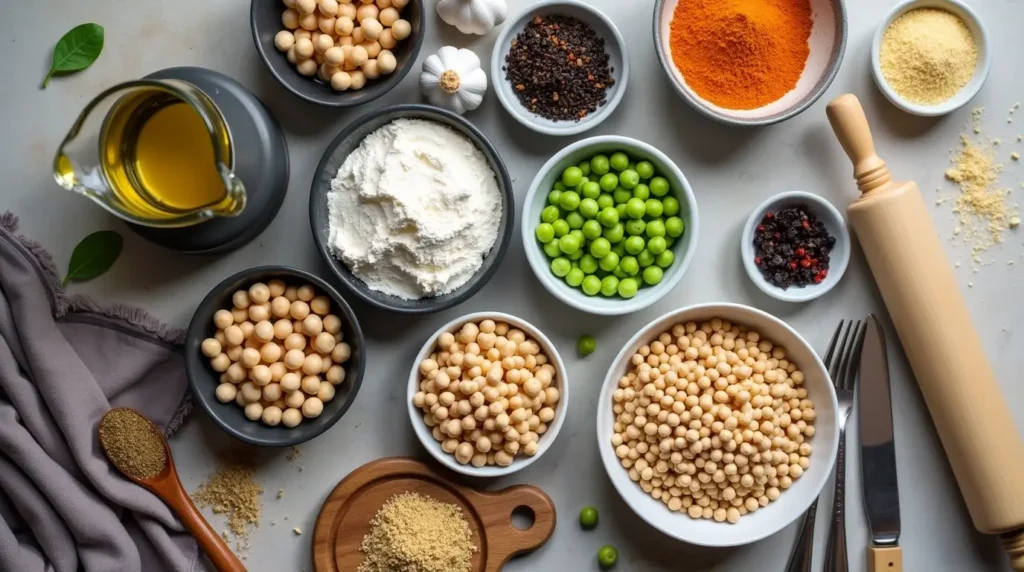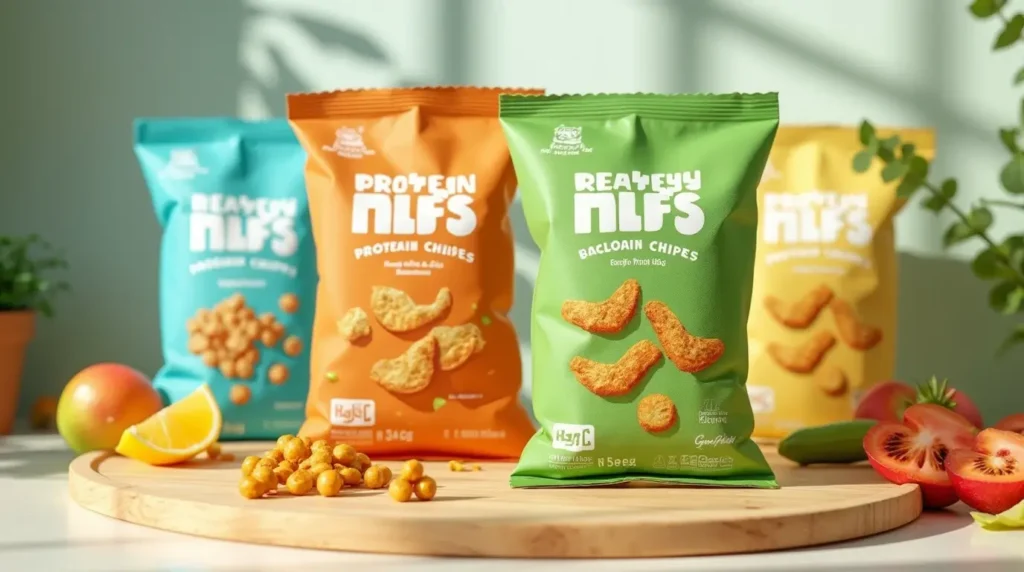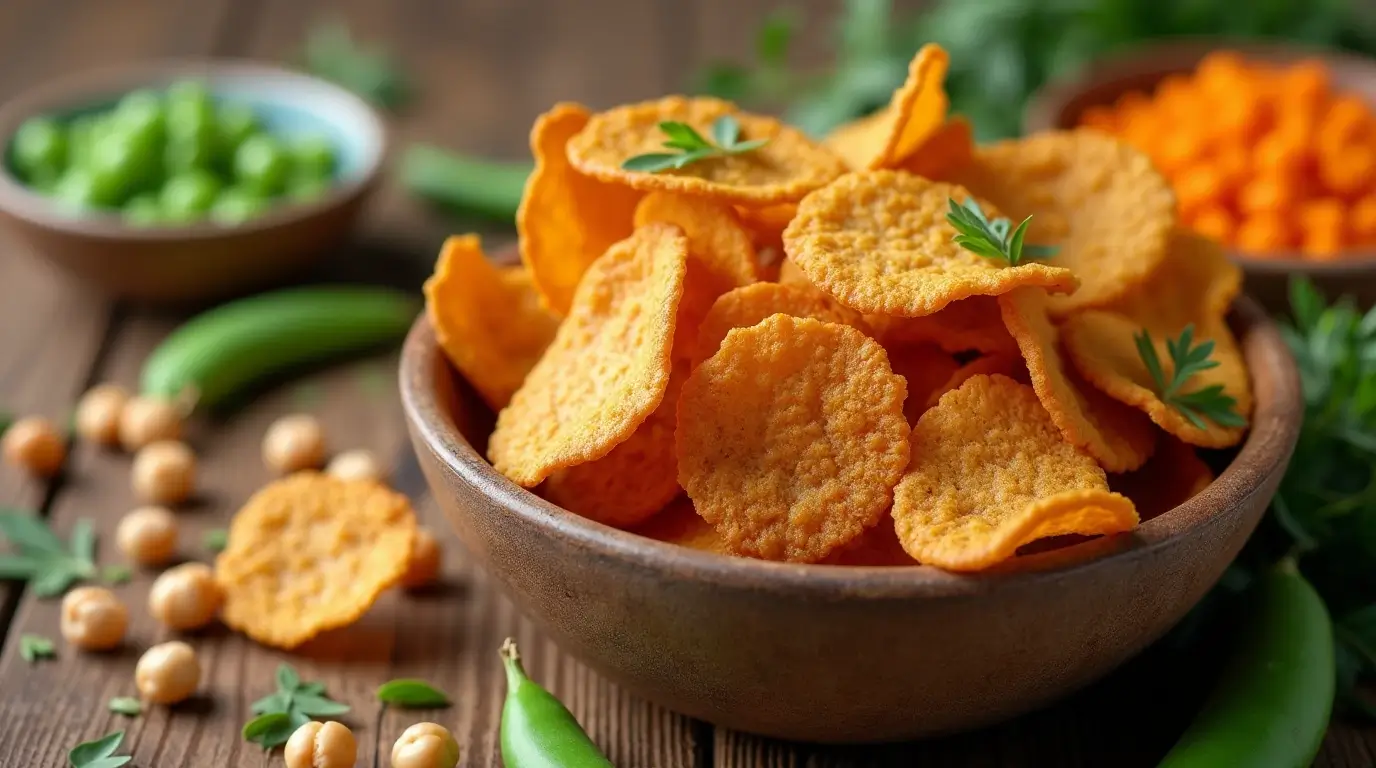The Truth You Need to Know
You’ve been there—scanning the snack aisle, spotting a bag of “high-protein chips” and wondering if it’s the healthier choice for your cravings. After all, it promises to offer more than your average potato chips, with benefits like more protein and fewer carbs. But when it comes to snacking, can you truly trust these high-protein chips as a healthy alternative, or is it all just clever marketing?
In this article, we’ll dive into what high-protein chips really are, how they compare to regular chips, and whether they deserve a place in your diet. You’ll also discover how to make your own high-protein chips at home and what brands are the best for your health goals. Let’s dig deeper and separate the facts from the marketing hype.
Table of Contents
What Are High Protein Chips? Understanding the Basics
Before we can answer whether high protein chips are truly healthy, it’s important to understand what they are and what they’re made of. High-protein chips are a relatively new category in the snack food industry, designed to satisfy both your crunchy snack cravings and your need for more protein. Unlike regular chips made from potatoes, these chips often come from plant-based sources like peas, lentils, and chickpeas, or from protein-rich ingredients like soy protein isolate or whey protein.
Key Ingredients in High Protein Chips:

- Peas and lentils: These legumes are a great source of plant-based protein and fiber, helping you feel full longer.
- Chickpeas: Chickpeas are a fantastic source of protein and also contribute to the crispness of the chips.
- Soy protein isolate: A high-quality protein derived from soybeans, often used to boost the protein content of the chips.
- Whey protein isolate: Derived from milk, whey protein is a fast-digesting protein that can also be used to increase protein content.
Most high-protein chips claim to offer between 5 and 15 grams of protein per serving. This is significantly more than traditional potato chips, which typically contain very little protein.
Why They’re Marketed as Healthy
High-protein chips often target individuals who are looking for healthier snack alternatives—those who are on a fitness journey, managing their weight, or simply trying to make better food choices. Protein is an essential nutrient that helps with muscle recovery, boosts metabolism, and helps curb hunger. Brands leverage these benefits to attract customers who are looking to boost their protein intake while enjoying a snack.
Are High Protein Chips Actually Healthier Than Regular Chips?
You might be wondering: are high-protein chips genuinely healthier than the classic bag of potato chips you know and love? To answer this, let’s break down the key differences and compare the nutritional profiles of both types of chips.
Comparison of Key Nutritional Facts:
| Nutritional Info | High-Protein Chips | Regular Chips |
|---|---|---|
| Protein | 5–15 grams per serving | 1–2 grams per serving |
| Fat | 3–6 grams per serving | 10–15 grams per serving |
| Carbohydrates | 10–20 grams per serving | 15–25 grams per serving |
| Calories | 140–160 per serving | 150–160 per serving |
| Sodium | 150–300 mg per serving | 100–200 mg per serving |
While high-protein chips provide more protein and less fat, they still contain added preservatives and may have higher sodium content. If you’re on a weight management program, you might want to check out how weight management programs work to complement your snacking choices.
Healthier Than Regular Chips?
While high-protein chips might be a healthier option for someone looking to increase protein intake, they’re not necessarily “healthy” in every sense of the word. They may still be processed, high in sodium, and not provide a complete range of nutrients. If you’re looking for a snack that delivers more than just a protein boost, whole-food alternatives like nuts, seeds, or fresh veggies might be a better option.
However, when compared to regular chips, high-protein chips generally come out ahead in terms of nutrition.
The Pros and Cons of High Protein Chips
Like all snacks, high-protein chips come with both benefits and drawbacks. Here’s a breakdown of the pros and cons to help you make a more informed choice.

The Pros: Why They Might Be a Better Option
- Higher Protein Content:
- The primary benefit of high-protein chips is, of course, the higher protein content. Protein helps with muscle recovery, supports a healthy metabolism, and keeps you feeling full longer. If you’re someone who struggles to hit your daily protein goals, swapping out regular chips for high-protein chips could be a good strategy.
- Better for Satiety:
- Because of their higher protein and fiber content, these chips are more filling than traditional chips. This can help curb hunger and reduce overall calorie intake.
- More Nutrients:
- Many high-protein chips are made from legumes, which are not only high in protein but also offer a range of other nutrients like fiber, iron, and antioxidants.
- Plant-Based Options:
- For those following a vegetarian or vegan diet, high-protein chips made from peas, lentils, and chickpeas can offer a healthy snack without relying on animal products.
The Cons: Things to Consider Before Indulging
- Processed Ingredients:
- While high-protein chips may have more protein, they are still processed foods. Many brands use refined oils, preservatives, and artificial flavors to enhance taste and shelf life. If you’re trying to avoid processed foods, high-protein chips may not be the ideal choice.
- High Sodium Levels:
- Sodium is an ingredient that’s commonly found in many snack foods, and high-protein chips are no exception. Consuming too much sodium can contribute to high blood pressure and other health issues, so it’s crucial to monitor your sodium intake.
- May Not Be a Meal Replacement:
- High-protein chips can be a great snack, but they’re not a replacement for a balanced meal. Relying on them too much could leave you missing out on other important nutrients like vitamins, minerals, and healthy fats.
Are High Protein Chips Suitable for All Diets?
When considering whether high-protein chips are right for you, it’s essential to look at how they fit into your overall dietary goals. High-protein chips can work for several types of diets, but not all.
Keto-Friendly or Low-Carb Options
Some high-protein chips are low-carb and suitable for the keto diet, but always check for hidden sugars. If you’re on a keto journey, you might also be interested in finding the best pre-workout for women to enhance your fitness goals.
Vegetarian and Vegan Diets
For vegetarians and vegans, high-protein chips can be an excellent option. Many of these chips are plant-based, using ingredients like chickpeas, lentils, and peas. These chips offer a crunchy, protein-packed snack without relying on animal products.
Gluten-Free and Allergen-Free
If you follow a gluten-free diet or have specific allergies, many high-protein chip brands cater to these needs. Always check the labeling to ensure the chips are free of gluten or other common allergens like soy or dairy.
How to Make High Protein Chips at Home
If you’re looking for a healthier option that’s customized to your tastes, making your own high-protein chips at home is a fantastic choice. Plus, it’s easy and affordable! Here’s a simple recipe to get you started:
DIY High-Protein Chips Recipe
Ingredients:
- 1 cup chickpea flour
- 1/2 cup water
- 1 tbsp olive oil
- Salt and pepper to taste
Directions:
- Preheat the oven to 350°F (175°C).
- Mix all ingredients together until a smooth dough forms.
- Spread the dough onto a baking sheet in a thin, even layer.
- Bake for 15–20 minutes or until crispy. Enjoy!
Flavor Variations:
Want to change things up? Here are some ideas for custom flavors:
| Flavor | Ingredients |
|---|---|
| Spicy | Add chili powder, cumin, garlic powder |
| Cheddar | Add nutritional yeast, smoked paprika |
| Garlic-Parmesan | Add garlic powder, Parmesan cheese |
The Best Brands of High Protein Chips to Try
If you’re not keen on making your own chips, there are plenty of great brands offering high-protein options. Here are a few worth trying:
- Brand A: Great for muscle recovery and a solid protein boost.
- Brand B: Best for those looking for a filling snack with fewer carbs.
- Brand C: Affordable and made with clean ingredients.
Make sure to read labels carefully to choose the one that best fits your dietary needs.
Should You Eat High Protein Chips Every Day?
While high-protein chips can be a better snack choice than traditional chips, moderation is key. These chips should be viewed as an occasional snack, not a regular replacement for whole, nutrient-dense foods like fruits, vegetables, and lean proteins.
If you’re craving something crunchy, high-protein chips can certainly help curb your appetite while providing a protein boost, but they should not be your go-to snack every day. Balance is crucial when it comes to maintaining a healthy diet.
FAQ Section
Are high-protein chips good for weight loss?
Yes, high-protein chips can help you feel fuller longer, reducing your overall calorie intake. However, portion control is key.
Can I eat high-protein chips on a keto diet?
Many high-protein chips are keto-friendly, but check the label for the carb content.
Are high-protein chips a healthy snack for kids?
High-protein chips can be a healthier option, but they should not replace whole foods like fruits and vegetables.
Do high-protein chips have any side effects?
Eating too many can cause bloating or digestive issues, especially due to the high fiber content. Always watch your serving size.
What makes high-protein chips different from regular chips?
High-protein chips contain more protein, less fat, and are often made from plant-based ingredients like chickpeas or lentils.

Conclusion: Are High Protein Chips Healthy?
High-protein chips can be a healthier alternative to regular chips, especially if you’re looking to increase your protein intake. They offer more satiety, help curb cravings, and may help with muscle recovery. However, they should be consumed in moderation, and it’s important to choose brands with quality ingredients. While they’re a great snack for some, they should not be relied on as a complete meal or your primary source of nutrients.
If you’re looking to snack smarter while maintaining your fitness goals, consider pairing high-protein chips with an effective weight management program to stay on track.

